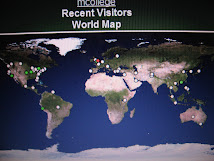* Blog 010 - Form 6 English - A - G - S - Transitions
Transitional Devices - Connecting Thoughts and Connecting their Groupings
Adapted from Purdue University Online Writing Lab
Transitional devices are like bridges between parts of your article, your essay, your text or your research paper. They are cues that help the reader to interpret ideas in the way that you, as a writer, want them to understand.
Transitional devices help you carry over a thought from one sentence to another, from one idea to another, or from one paragraph to another with words or phrases. And finally, transitional devices link your sentences and paragraphs together smoothly so that there are no abrupt jumps or breaks between ideas.
There are several types of transitional devices, and each category leads your reader to make certain connections or assumptions about the areas you are connecting. Some lead your reader forward and imply the "building" of an idea or thought, while others make your reader compare ideas or draw conclusions from the preceding thoughts.
Here is a list of some, but not all, common transitional devices that can be used to cue your reader in a given way.
What should you do about these 150 + sample transitions?
1. Find out what each one means.
2. Find out how each one is used.
3. Use the WordNet site for definitions.
4. Use the edict site for access to the concordancer at WordNet. Then you can find dozens and dozens of examples of each transition in use on the Internet by using the Concordancer to find those examples.
5. Write out some sample sentences using each transition. The more you work with these transitions, the more familiar they will become to you. This familiarity provides a foundation for your competent use of these "thought bridges" in your written English.
THE LIST:
To Add:
and, again, and then, besides, equally important, finally, further, furthermore, nor, too, next, lastly, what's more, moreover, in addition, first (second, etc.),
To Compare:
whereas, but, yet, on the other hand, however, nevertheless, on the other hand, on the contrary, by comparison, where, compared to, up against, balanced against, vis a vis, but, although, conversely, meanwhile, after all, in contrast, although this may be true
To Prove:
because, for, since, for the same reason, obviously, evidently, furthermore, moreover, besides, indeed, in fact, in addition, in any case, that is
To Show Exception:
yet, still, however, nevertheless, in spite of, despite, of course, once in a while, sometimes
To Show Time:
immediately, thereafter, soon, after a few hours, finally, then, later, previously, formerly, first (second, etc.), next, and then
To Repeat:
in brief, as I have said, as I have noted, as has been noted,
To Emphasize:
definitely, extremely, obviously, in fact, indeed, in any case, absolutely, positively, naturally, surprisingly, always, forever, perennially, eternally, never, emphatically, unquestionably, without a doubt, certainly, undeniably, without reservation
To Show Sequence:
first, second, third, and so forth. A, B, C, and so forth. next, then, following this, at this time, now, at this point, after, afterward, subsequently, finally, consequently, previously, before this, simultaneously, concurrently, thus, therefore, hence, next, and then, soon
To Give an Example:
for example, for instance, in this case, in another case, on this occasion, in this situation, take the case of, to demonstrate, to illustrate, as an illustration, to illustrate
To Summarize or Conclude:
in brief, on the whole, summing up, to conclude, in conclusion, as I have shown, as I have said, hence, therefore, accordingly, thus, as a result, consequently, on the whole,
For further information, including suggestions on how to use transitions more effectively, check out the OWL link on this blog, and at that site click the " Sentence Variety" link.
________________________________
Subscribe to:
Post Comments (Atom)





No comments:
Post a Comment